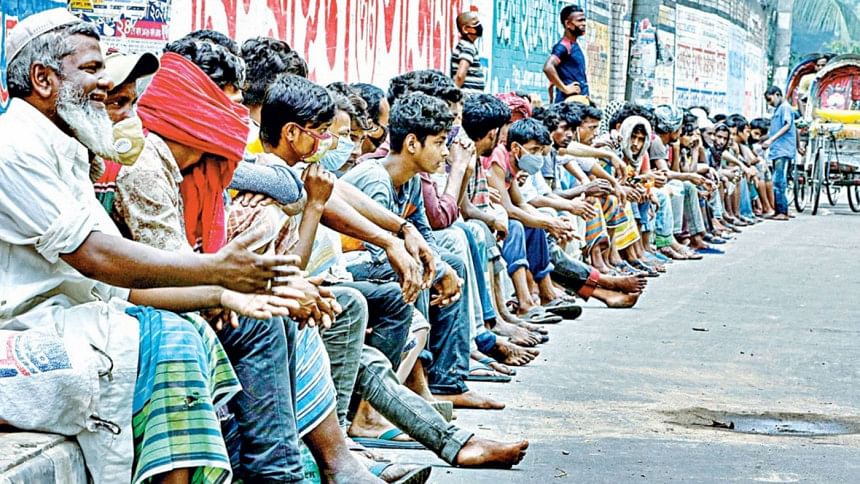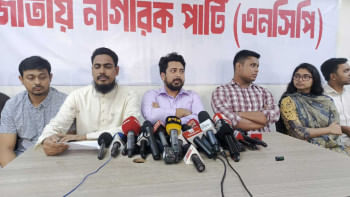Social protection budget for FY2021 falls short of expectations

There have been lots of debates and disagreements with regard to the economic cost of Covid-19 in Bangladesh. In particular, the debate concentrated on GDP growth rate in FY2020, which ranged from 1.6 percent (World Bank) to 5.5 percent (Budget Speech FY 2021, Ministry of Finance [MOF]). The disagreement is even bigger for FY2021 with projected GDP growth rate varying from 1 percent (World Bank) to 8.2 percent (MOF). I believe this debate was uncalled for as the key focus should have been on saving lives and livelihood. Almost everyone would agree that tax financed social assistance directed to the vulnerable groups (i.e. existing poor and new poor due to Covid-19) is an important fiscal instrument for saving lives. Social assistance is one of the two pillars of a social protection system. The social protection system is composed of social assistance and social insurance. The citizens expected there to be a series of measures for the social protection and social assistance systems in the budget for FY2021.
Let's try and seek answers to four key questions that govern the social assistance system in Bangladesh (and elsewhere): (i) what is the allocation for social assistance directed to the vulnerable groups; (ii) what measures are adopted to improve very poor beneficiary identification problem; (iii) what is the efficient way to make social assistance payment to the beneficiaries; and (iv) What is the expectation of poor persons regarding the transfer amount (also known as "generosity" in social protection vocabulary). Since the last question is of less prominence during the severe fiscal constraints due to contraction of economic activities imposed by Covid-19, I will focus mainly on the other three questions.
First, the expectation was to raise the social protection budget to 3 percent of GDP from the current level of 2.5 per cent of GDP. According to the budget speech, the total allocation to social protection (SP) system for FY2021 is 3.01 percent of GDP. One major item in SP budget is pension for government officials (PGO). In FY2020, the total allocation for PGO was 0.82 per cent out of total SP budget of 2.92 per cent of GDP. Pension for PGO is regarded as social insurance and hence allocation for social assistance in FY2020 should have been 2.10 per cent of GDP after deducting 0.82 per cent allocation for PGO. But there is more to this story.
The SP budget prepared by the Finance Division includes a number of questionable items that should not be considered under the SP budget. Some of these include interest rate of savings certificate (0.24 percent in FY20 and 0.21 percent in FY21); constructions (0.021 percent in FY20 and 0.03 percent in FY21); spending on health services (0.10 percent in FY20 and 0.09 percent in FY21); spending on family planning services (0.026 percent in FY20 and 0.03 percent in FY21); and agriculture rehabilitation and subsidy (0.005 percent in FY20 and 0.14 percent in FY21). The total value of these questionable items was 0.40 percent of GDP in FY2020 and 0.49 percent of GDP in FY2021. These should not be part of the social assistance system. When these values are deducted, the allocations for social assistance directed to the vulnerable groups are 1.70 percent of GDP in FY2020 and 1.79 percent in FY2021. The call was to raise allocation to 3 percent of GDP and we are short by 1.21 per cent of GDP in FY2021.
Second, it is expected that budget would include some measures to improve Bangladesh's awful record in beneficiary selection. Increasing social assistance allocation directed to the vulnerable is perhaps an easier task compared to the task of improving the beneficiary identification in Bangladesh. The methods followed in Bangladesh to identify beneficiaries have been very inefficient, resulting in a high level of under-coverage of deserving beneficiaries (e.g. the poor and vulnerable). For instance, under-coverage (which is also known as "exclusion error") denotes the sum of actual poor wrongly classified as non-poor as a proportion of the total poor. According to the Household Income and Expenditure Survey 2016, the under-coverage of deserving beneficiaries was around 71 percent. This suggests that the Bangladesh SP system could only reach 30 percent of the deserving beneficiaries accurately. Given the inefficiency in beneficiary identification/selection, only 0.6 percent of current social assistance allocation (e.g. 1.70 percent in FY2020) reached the deserving beneficiaries in FY2020.
To address the high cost inefficiency problem, the government has undertaken a project to develop a comprehensive database of all households (known as the National Household Database or NHD) and develop an Information Management System (IMS). Both NHD and IMS should have been completed by 2019. Even though the completion of NHD and IMS will not eliminate exclusion errors, they may improve the beneficiary selection. Given the importance of effective beneficiary selection, it was expected that the FY2021 budget would provide some strategic directions to the completion of NHD and IMS and what further needs to be accomplished to improve the beneficiary identification in Bangladesh. But the budget failed to come up with strategic suggestions and hence fell short of meeting the expectation.
Third, it is expected that new measures will be announced to expand government-to-person (G2P) payment modality taking advantage of the burgeoning Mobile Financial Services (MFS) infrastructure. Currently multiple payment methods are used to transfer funds to the beneficiaries. A research study on the Payment System for Social Protection in 2017 revealed several disadvantages of the current payment systems. Some of them include: (i) delay in receiving funds; (ii) inconvenience for beneficiaries—time, opportunity and money-wise; (iii) added difficulties for old, disabled, sick, mothers with child, pregnant mothers; (iv) high transaction costs (0-2.5 percent); (vi) vulnerable to duplication and fraudulent payments; and (vii) risk in cash management. Considering these demerits, MoF has been implementing a pilot project to remit transfers through G2P payment modality. But G2P is still very limited in scale as only a few programmes are included in the G2P pilot. For instance, cash allowances for 11 SPs are partially disbursed through G2P. In FY2019 only 1.4 percent of SP allocation (or only 6.7 percent of total allocations for the cash programmes) went through the digitised G2P national architecture. Given its merits as well as to enhance financial inclusion, the coverage of G2P should have been substantially larger. There was no strategic direction to widen the G2P coverage in FY2021 budget. Again, the budget fails to meet the expectation.
Social assistant budget as proposed has failed to meet the expectations and requirements. Considering the importance of the social assistance system for saving lives, we urge the government to increase the allocation of social assistance to 3 percent of GDP, provide timebound strategic directions to improve beneficiary selection, and take measures to widen the G2P coverage such that beneficiaries receive their transfers at their fingertips every month.
Bazlul Khondker, PhD is professor of Economics, Dhaka University. He is also the Chairman of South Asian Network on Economic Modeling (SANEM) and a director at the Policy Research Institute (PRI) of Bangladesh.

 For all latest news, follow The Daily Star's Google News channel.
For all latest news, follow The Daily Star's Google News channel. 



Comments